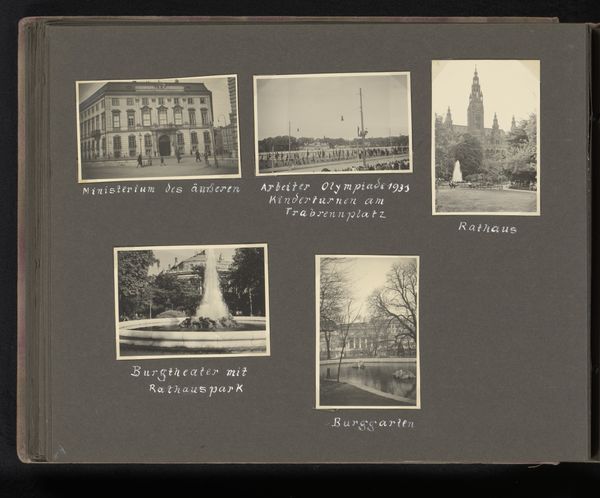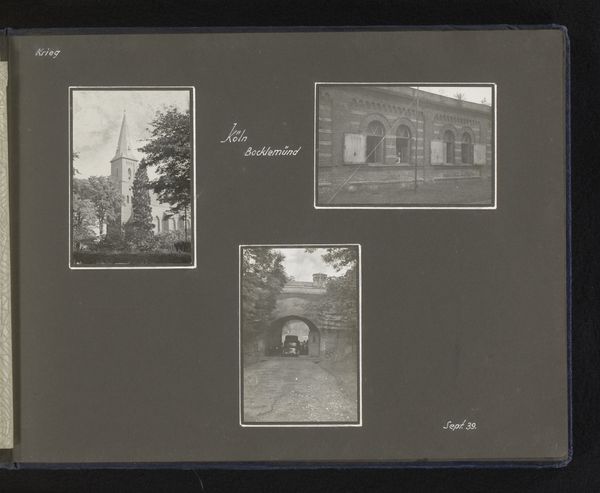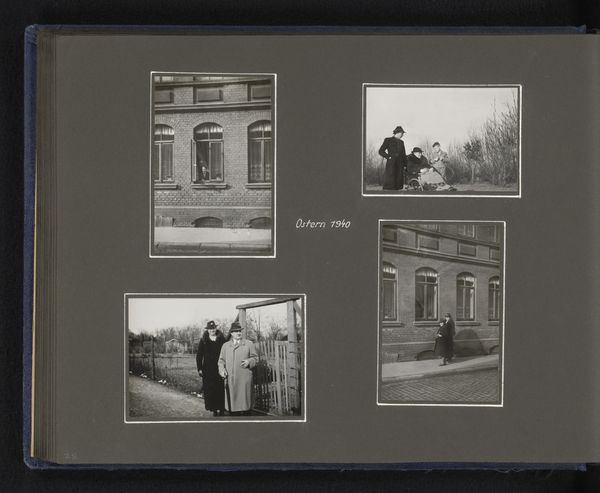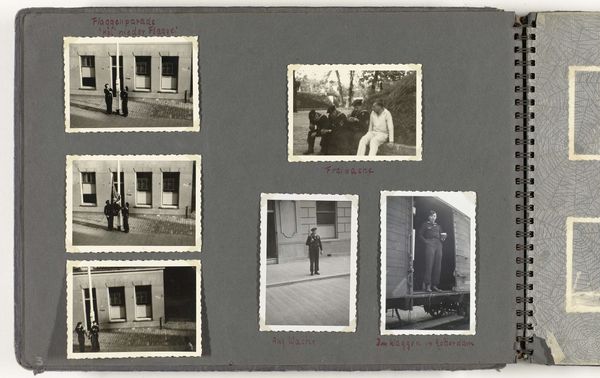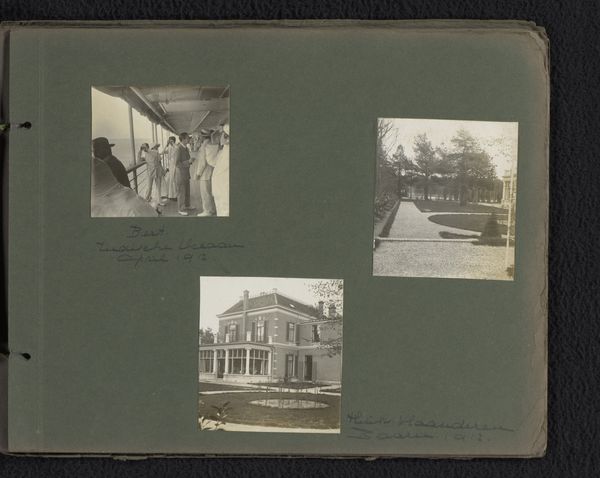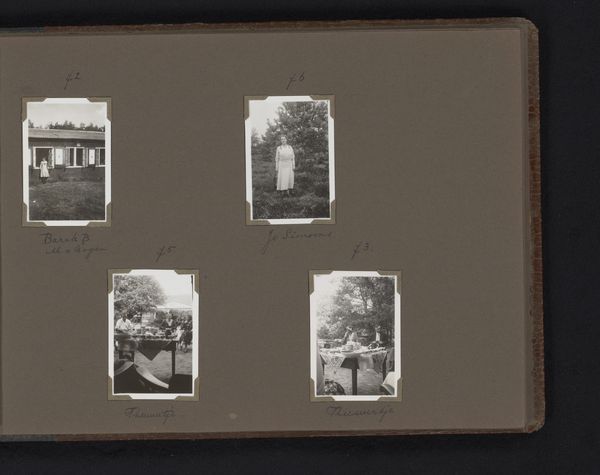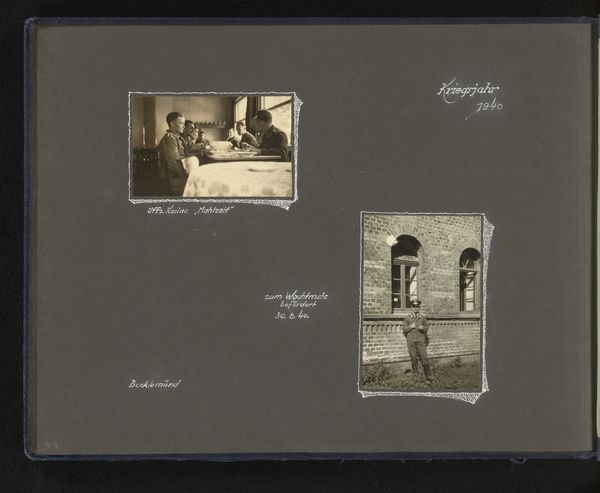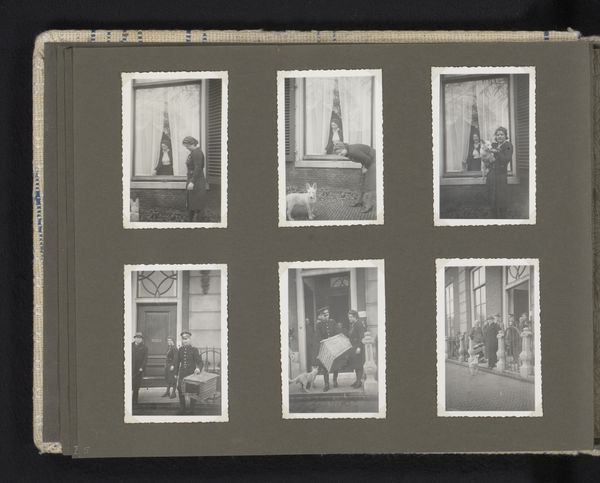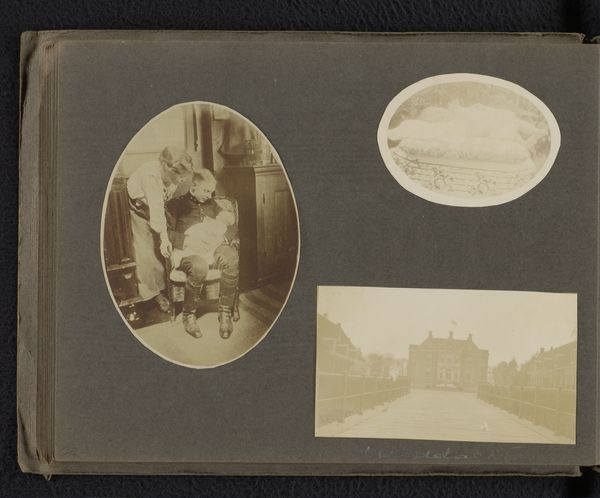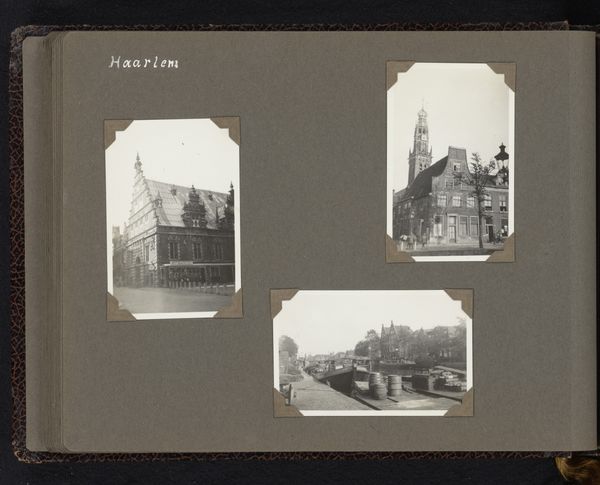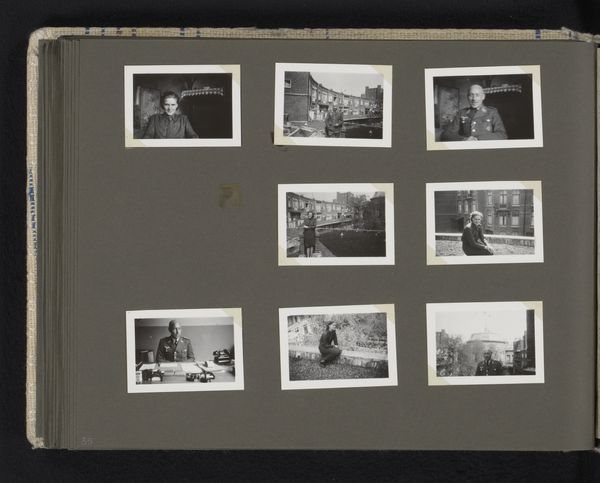
photography, albumen-print
#
portrait
#
pictorialism
#
landscape
#
street-photography
#
photography
#
cityscape
#
history-painting
#
albumen-print
Dimensions: height 238 mm, width 290 mm
Copyright: Rijks Museum: Open Domain
Editor: This is "Lente in Wenen," or "Spring in Vienna," by Berti Hoppe, taken sometime between 1930 and 1931. It looks like an album page with multiple black and white photographs affixed to it, each a scene from Vienna. The mood feels…nostalgic, maybe a little melancholic. What do you see in this piece? Curator: I see a fascinating intersection of personal narrative and urban history. These aren't just pictures of Vienna; they're curated memories presented in the format of an intimate album, meant to capture, preserve and project individual experience. Hoppe’s arrangement asks us to consider whose perspective is being privileged here. Do these images disrupt dominant historical narratives by showcasing a woman's experience of urban space during a tumultuous period? Editor: That's an interesting point. I hadn’t thought about whose experience it was showing. How would you relate that to the photographs? Curator: The images themselves are telling. Consider the shot of the woman walking on the path. Is she a participant in or an observer of the scene? Hoppe seems conscious of placing figures in relation to architectural and natural settings to subtly comment on individual experiences within society. This act of selecting and arranging challenges traditional depictions of Vienna by incorporating her lived reality as a woman in 1930s Europe. Do you think that changes how we understand the imagery? Editor: Definitely. Thinking about the context and perspective gives a new layer to the photos. Instead of just seeing pretty pictures, I'm now wondering about the photographer's point of view, her experiences, and what she wanted to say about the world around her. Curator: Exactly. The placement of photos like dried botanicals, like pressed flowers, further sentimentalizes each photograph and marks this specific historical experience with a deeply affective and personal tone. So next time you view an image, think critically: who created it, under what conditions, and whose stories are being told? Editor: This has totally changed how I'll look at photographs going forward. Thanks so much!
Comments
No comments
Be the first to comment and join the conversation on the ultimate creative platform.

